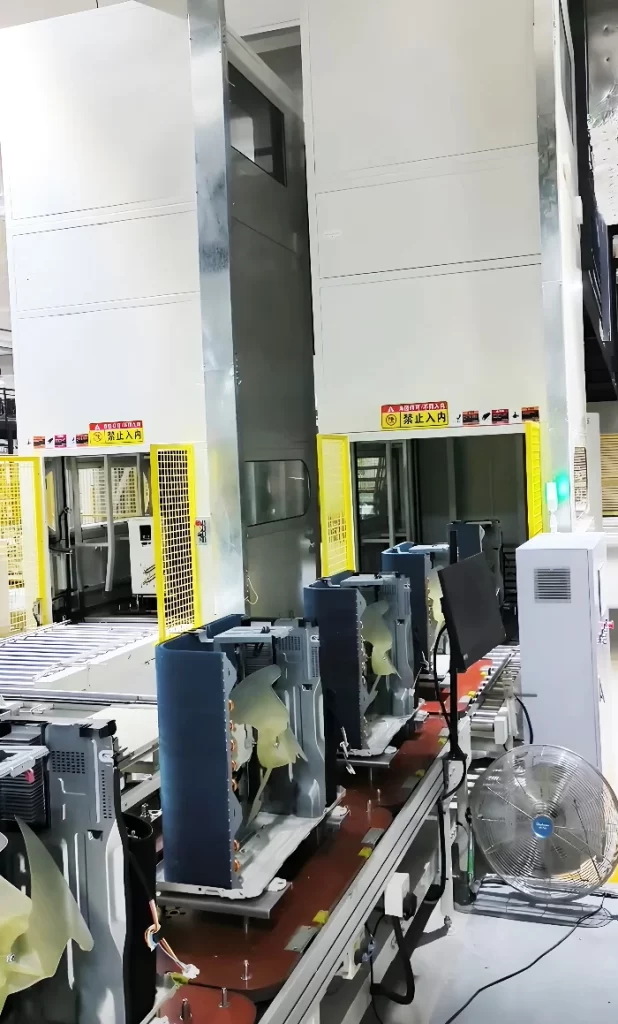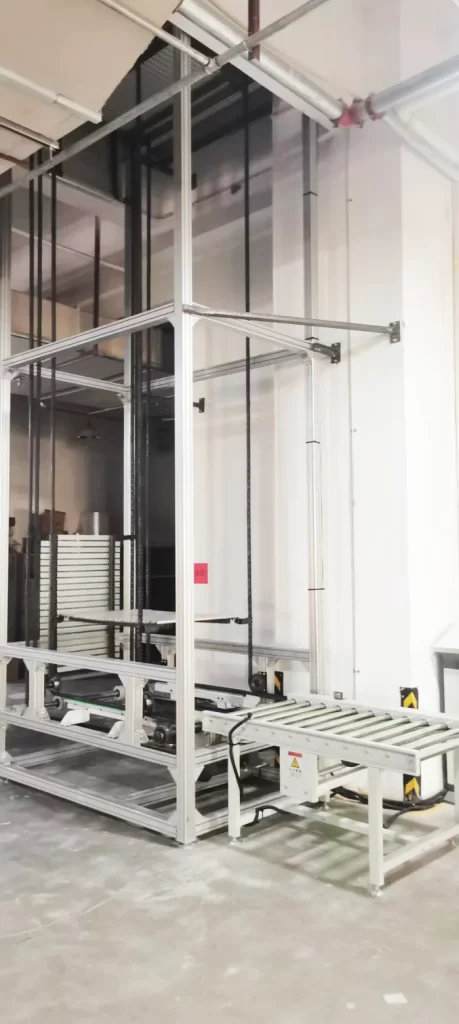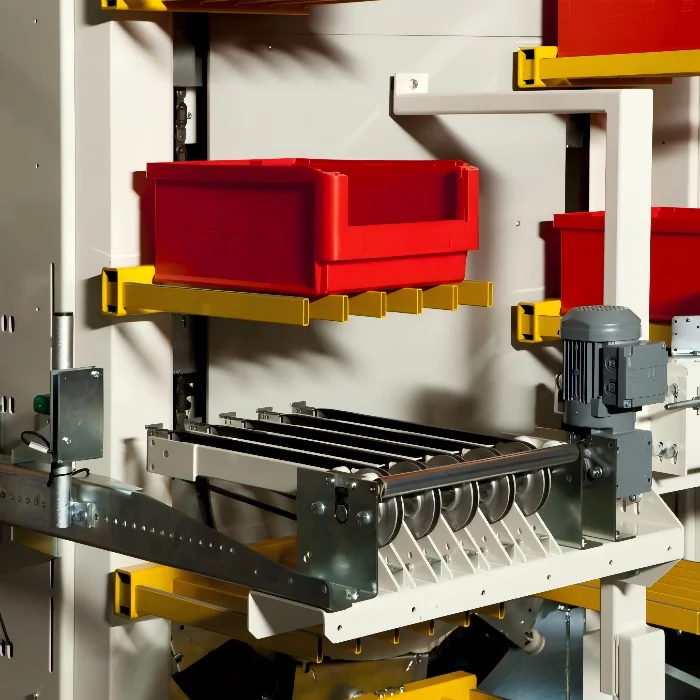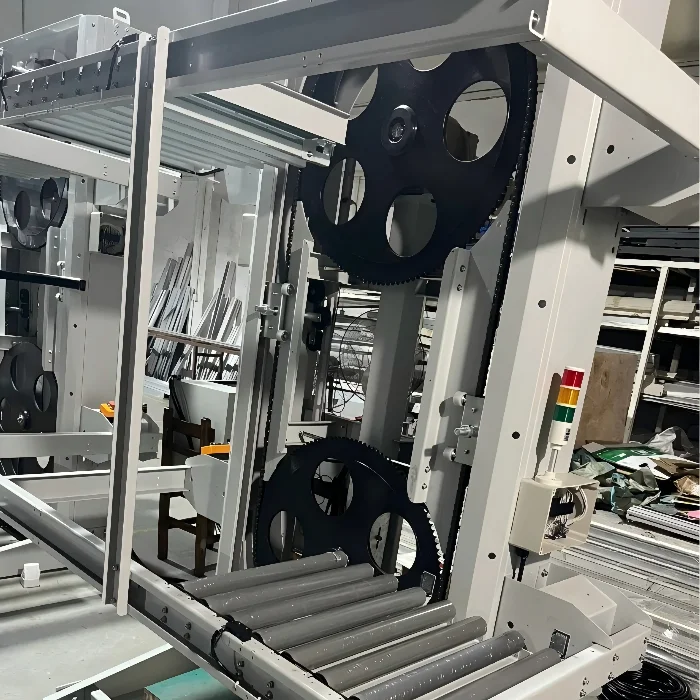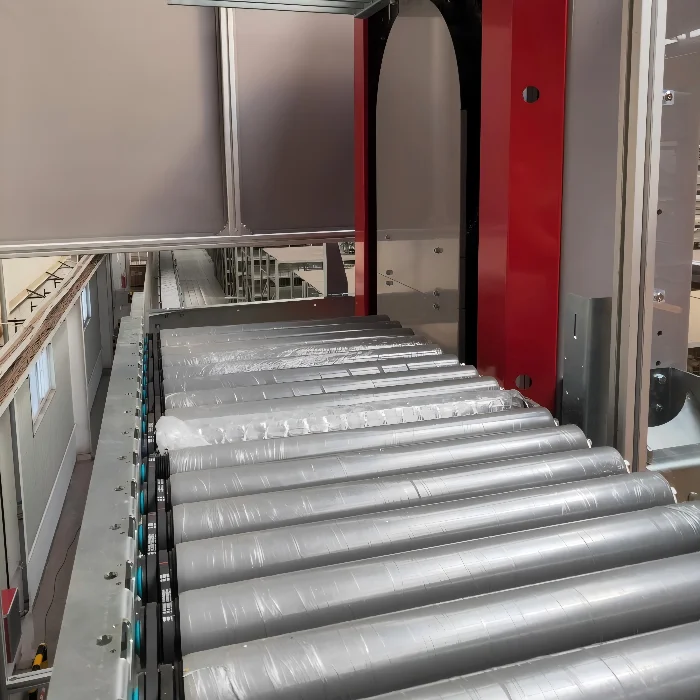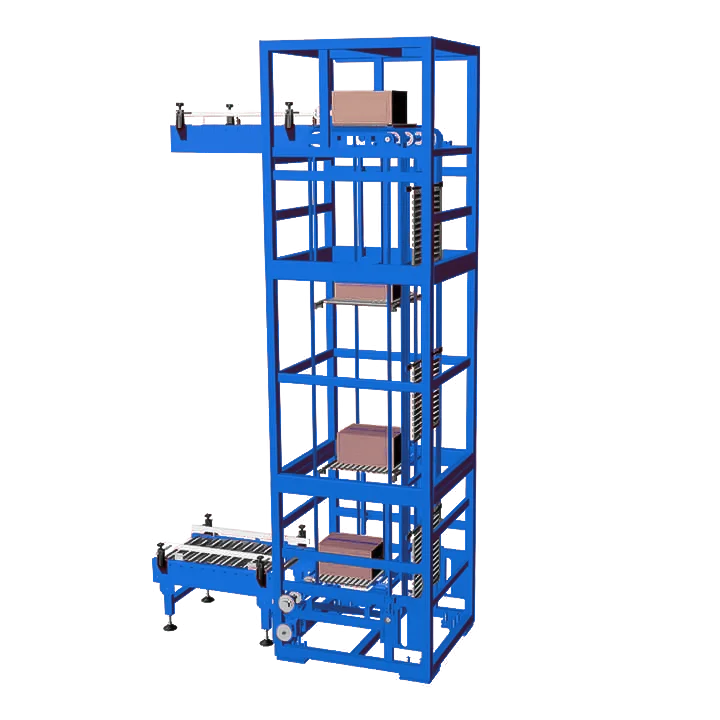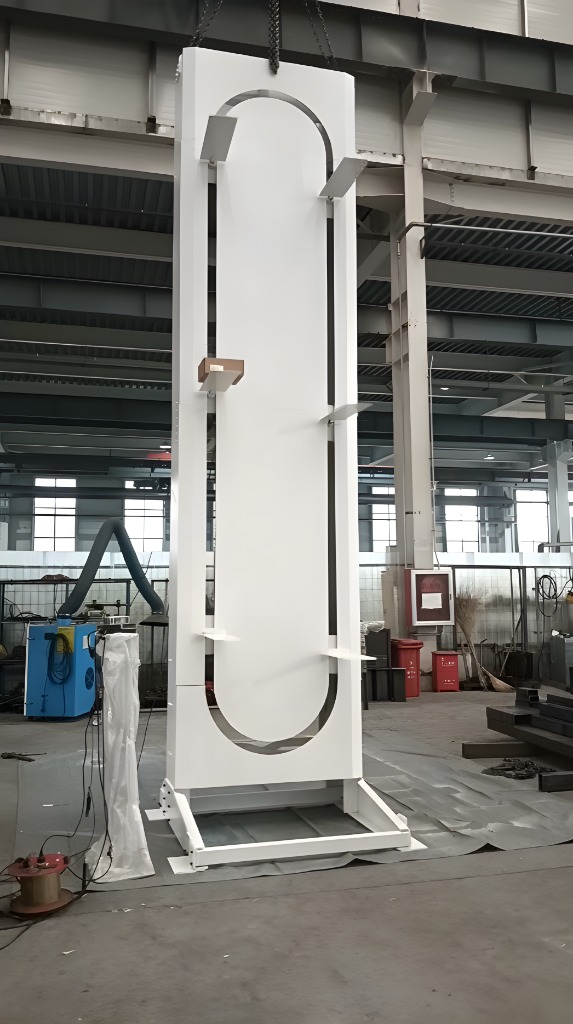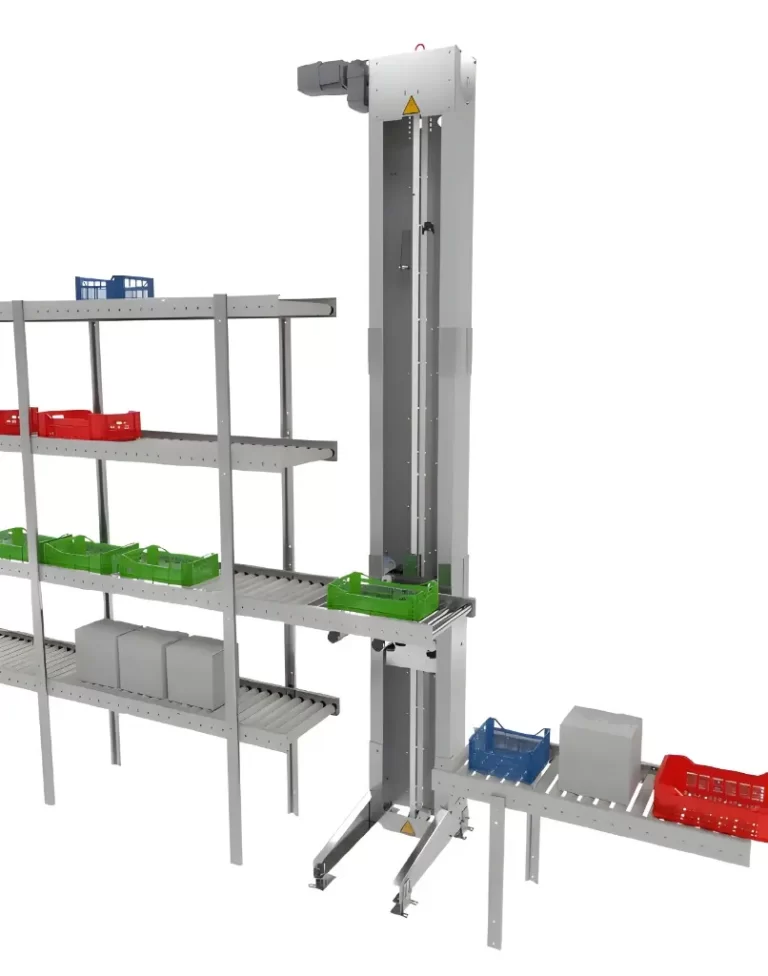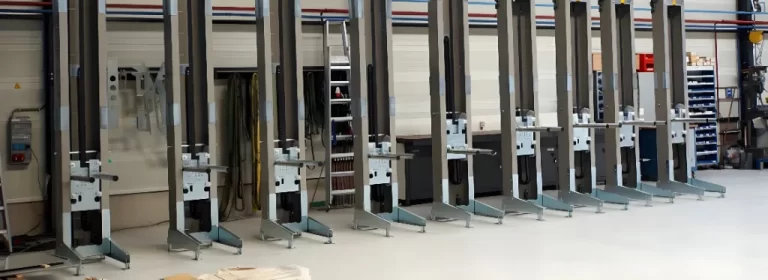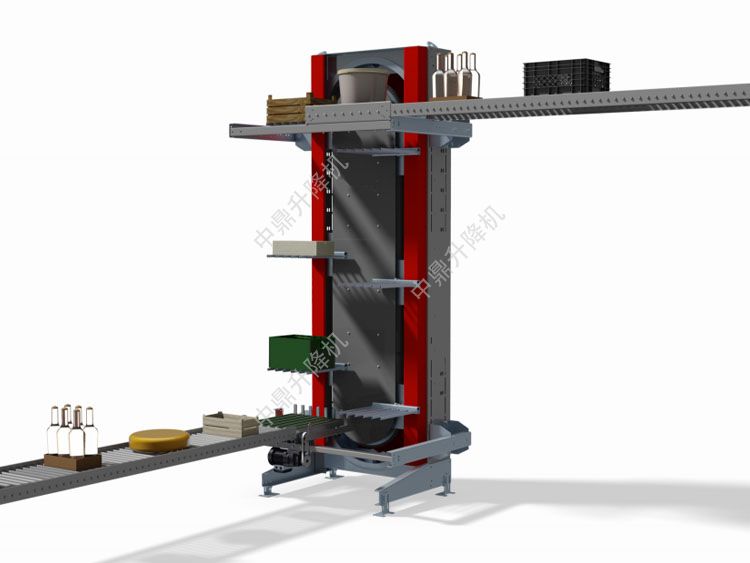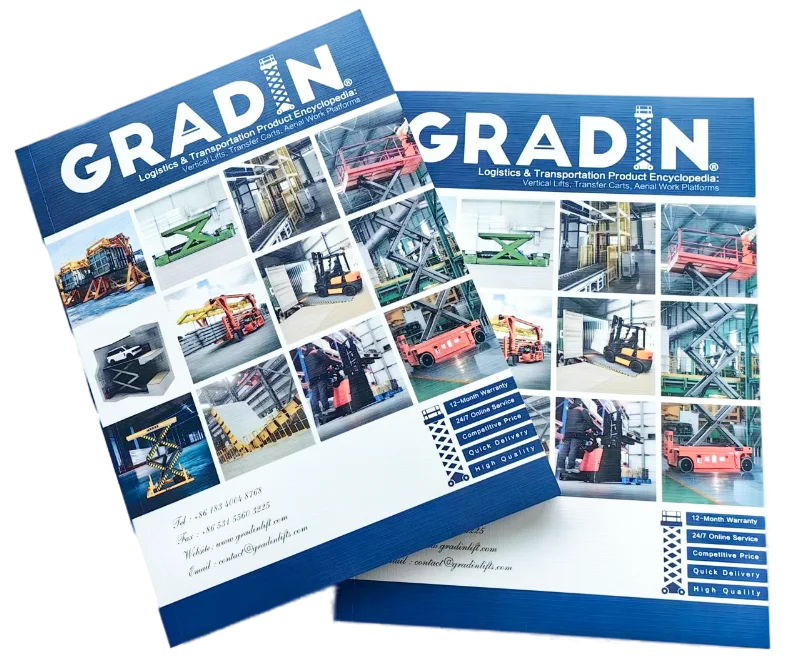Transportadores verticales continuos (CVC)
El CVC permite el transporte vertical rápido de cajas de cartón, palés, equipajes, barriles, etc. entre plantas. Con configuraciones compactas Z/C/E, alcanza velocidades de hasta 30 m de altura al tiempo que reduce el espacio ocupado en 90% en comparación con los transportadores en espiral.
Más información hable con nuestro equipo
Diseño minimalista con accionamiento cerrado, menos piezas móviles, fácil instalación y funcionamiento fiable.
Permite la transferencia de material en 3D, adaptable a diversas cargas y entornos.
Transporte fluido en varias plantas con clasificación automatizada, lo que minimiza el espacio y el consumo de energía.
Se integra con transportadores horizontales para reducir la manipulación manual y aumentar la productividad.
¿Quiere saber más? Nuestra útil
está aquí para ayudarle.
Solicitar un presupuesto
Vea nuestra gama de transportadores verticales circulantes
Capacidad de transporte: 1500 cajas/hora
Altura de elevación: hasta 16 m
Velocidad de elevación: ≤ 40m/min
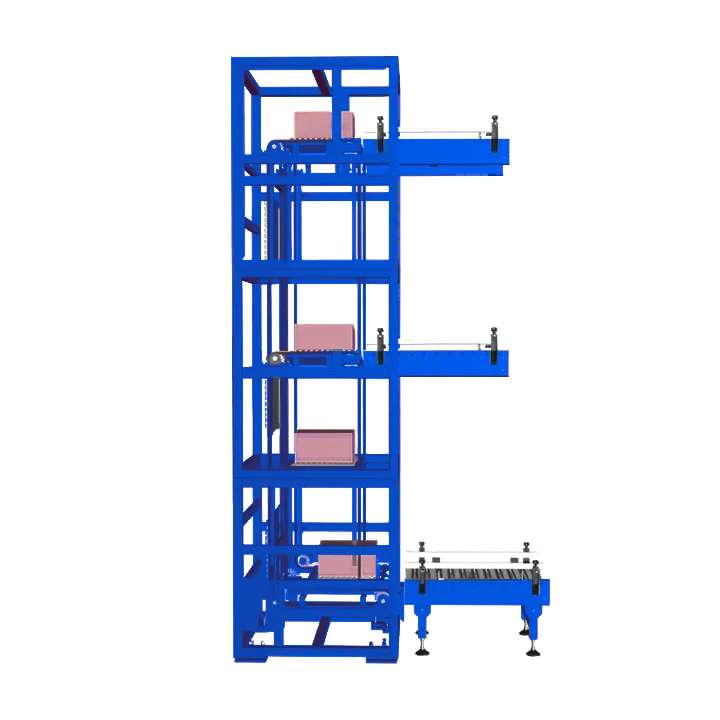
Capacidad de transporte: 1500 cajas/hora
Altura de elevación: hasta 16 m
Velocidad de elevación: ≤ 40m/min
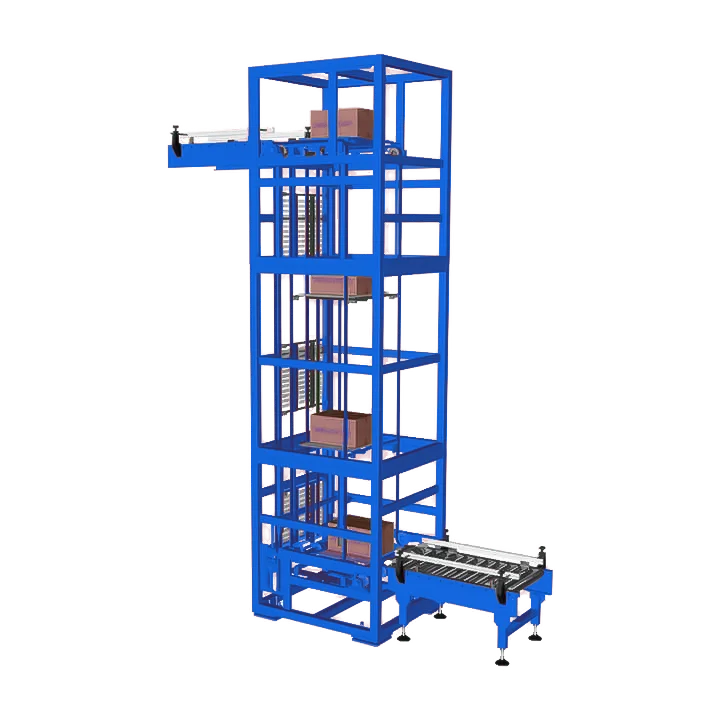
Se combina con las líneas transportadoras de importación y exportación para formar un sistema completo de elevación continua, realizando operaciones automatizadas de varios pisos, varias entradas y varias salidas, ahorrando espacio y mejorando la eficiencia.
Capacidad: ≤ 600kgCapacidad de transporte: 30pcs/min
Altura de elevación: Personalizada
Talla: Personalizado
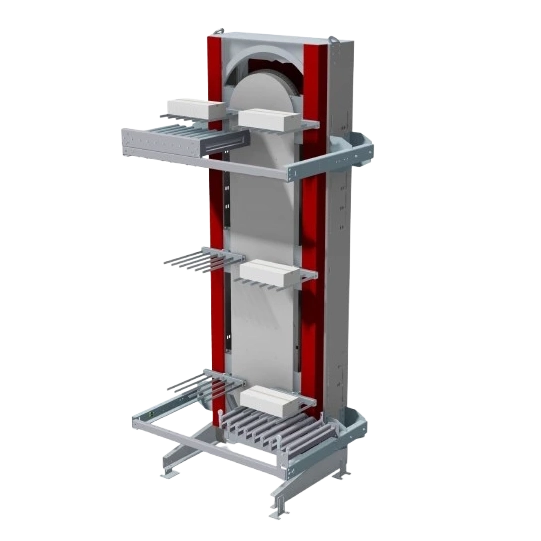
Preguntas frecuentes sobre el CVC
La instalación de un transportador vertical circulante (CVC) suele requerir modificaciones estructurales limitadas. Los diseños modulares se adaptan a los espacios existentes, pero los factores clave son la capacidad de carga del suelo, la altura del techo y los puntos de anclaje para la estabilidad. Las configuraciones de varios pisos pueden implicar penetraciones en el suelo, aunque las configuraciones compactas en forma de Z/C/E reducen la alteración del espacio. Para los sistemas altos (por ejemplo, de más de 30 metros), pueden ser necesarios soportes o vigas reforzados para soportar cargas pesadas.
Las evaluaciones previas a la instalación realizadas por ingenieros son fundamentales para garantizar el cumplimiento de los códigos de construcción y optimizar la integración. Los sistemas eléctricos y de control deben alinearse con la infraestructura de las instalaciones, pero los CVC prediseñados suelen minimizar los cambios estructurales en comparación con los sistemas tradicionales. La planificación se centra en equilibrar las necesidades operativas con un impacto arquitectónico mínimo.
Los CVC dan prioridad a la eficiencia energética mediante ingeniería avanzada. Los variadores de frecuencia (VFD) ajustan dinámicamente la velocidad del motor para adaptarse a las demandas de carga en tiempo real, reduciendo el consumo de energía en 20-30% en comparación con los sistemas tradicionales. Los mecanismos de bucle cerrado reducen la fricción mecánica, mientras que el frenado regenerativo en los modelos de alta capacidad recupera la energía cinética durante los ciclos descendentes. Los modos de ralentí automatizados minimizan aún más el uso de energía durante las pausas operativas.
Las estructuras ligeras de aluminio y los diseños modulares reducen la resistencia a la inercia y mejoran la sostenibilidad a largo plazo. Aunque el consumo de energía varía con el peso de la carga y la altura vertical (hasta más de 30 metros), los CVC superan a los transportadores en espiral o de banda en eficiencia del ciclo de vida. La menor necesidad de mantenimiento -gracias al menor número de piezas móviles- también contribuye a reducir los costes operativos, en consonancia con los objetivos ecológicos de las instalaciones.
Los CVC están diseñados para ofrecer versatilidad de materiales. Los soportes personalizables con sistemas de sujeción ajustables transportan con seguridad productos frágiles como cristalería o productos electrónicos. Los controles de arranque/parada suave y los mecanismos de amortiguación de vibraciones evitan los empujones, mientras que los sensores ópticos detectan las cargas inestables y activan los ajustes de velocidad. Para formas irregulares, los accesorios modulares como las bandejas extensibles o los soportes magnéticos garantizan un tránsito vertical seguro.
Los artículos excepcionalmente voluminosos o asimétricos pueden requerir soluciones a medida, como la integración de brazos robóticos para una carga precisa. La mayoría de las configuraciones estándar de CVC admiten pesos de hasta 2.000 kg y tamaños de artículos de 2 m x 2 m. Las consultas previas a la instalación ayudan a optimizar los parámetros del sistema para necesidades de manipulación especializadas en sectores como el aeroespacial o el de envases de lujo.
